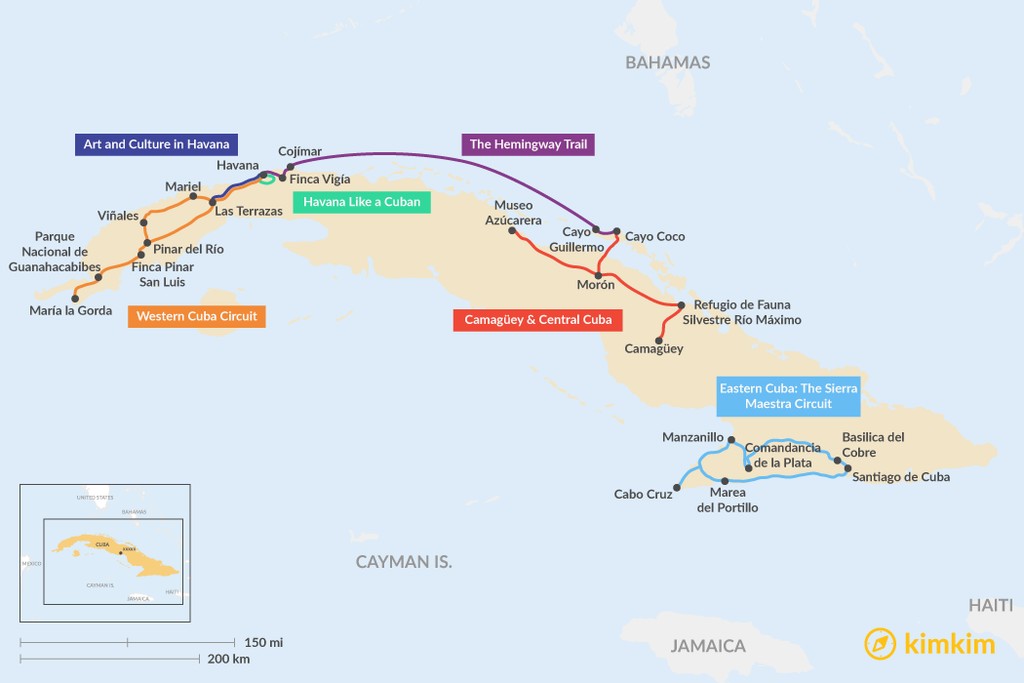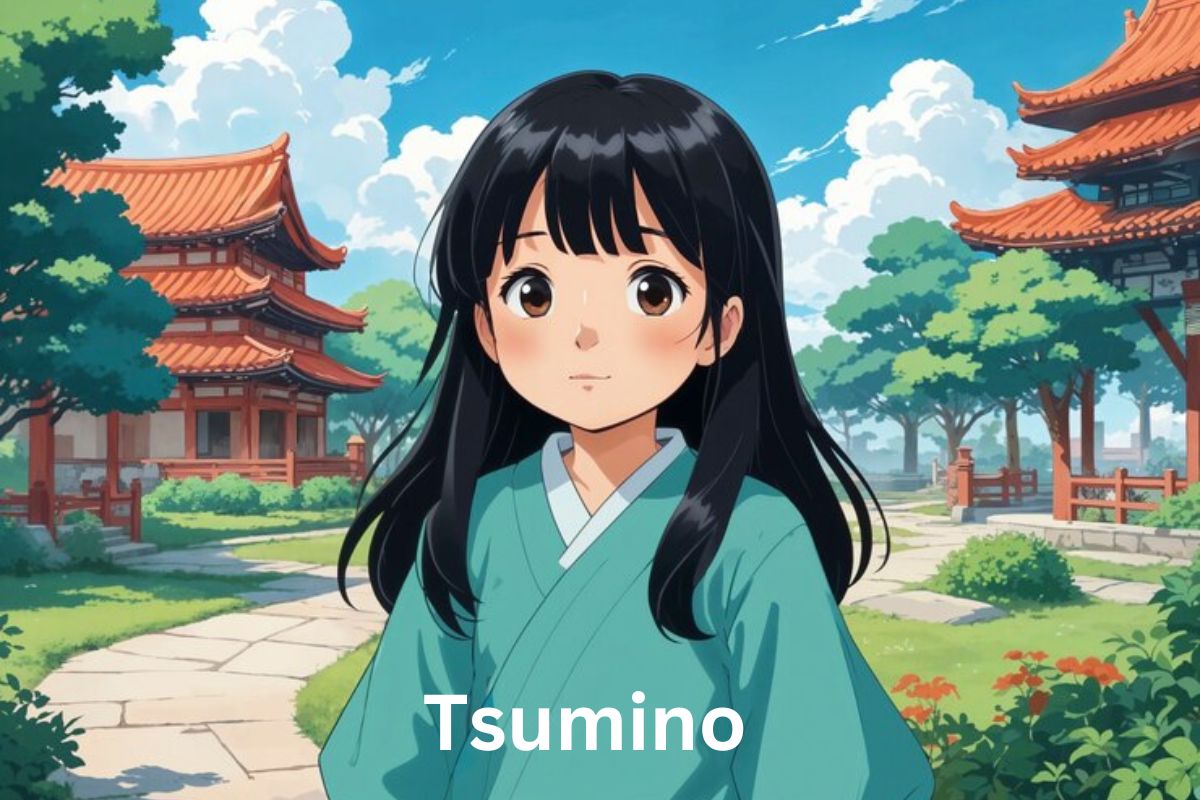ENTERAINMENT
Cuba Map: A Comprehensive Guide to Explore the Island

Cuba is a captivating country that boasts a rich history, vibrant culture, and stunning landscapes. Whether you’re planning a vacation or just curious about this Caribbean gem, understanding the layout and geography of the island is essential. This comprehensive guide takes you on a virtual tour of Cuba, highlighting key regions, cities, and attractions that make this island a must-see destination.
The Fascinating Geography of Cuba
Cuba, the largest island in the Caribbean, offers a diverse range of landscapes. From white sandy beaches to lush mountain ranges, its geographical diversity is truly remarkable. Stretching over 780 miles from east to west, the island is home to over 4,000 smaller islands and cays. The island’s wide variety of terrain provides numerous opportunities for adventure and relaxation.
Cuba Map geography is shaped by a combination of mountains, plains, and coastal areas. The Sierra Maestra mountain range, located in the southeast, is the highest in the country, with Pico Turquino reaching an impressive 6,476 feet. Meanwhile, the northern coastline features beautiful coral reefs and extensive mangroves. Agriculture thrives in the central plains, producing crops like tobacco and sugarcane.
Understanding Cuba’s geography is crucial for appreciating its incredible biodiversity. The island supports a wide range of flora and fauna, some of which are unique to the region. Exploring the different ecosystems is a treat for nature enthusiasts, offering opportunities for hiking, birdwatching, and more.
Havana The Heartbeat of Cuba
Havana, the vibrant capital city, is a must-visit for anyone exploring the island. Known for its colorful Spanish colonial architecture and lively atmosphere, Havana offers a unique blend of history and modernity. The city’s iconic landmarks, such as El Capitolio and the Malecón, are perfect starting points for any tourist.
The historic neighborhood of Old Havana, a UNESCO World Heritage site, is a treasure trove of culture and heritage. Wander through cobblestone streets, marvel at the well-preserved buildings, and soak in the lively street music. Don’t miss the chance to visit the Museo Nacional de Bellas Artes, showcasing an impressive collection of Cuban art.
Beyond its architectural beauty, Havana is known for its vibrant nightlife and music scene. Enjoy live performances of traditional Cuban music, such as son and salsa, at local clubs and open-air venues. The city’s dynamic energy is contagious, making every visit a memorable experience.
Varadero Beach Paradise Awaits
If pristine beaches are what you seek, look no further than Varadero. This popular resort town is famed for its powdery white sands and crystal-clear waters. Situated on the Hicacos Peninsula, Varadero stretches over 12 miles, offering ample space for sunbathing, swimming, and water sports.
While Varadero is known for its luxurious all-inclusive resorts, there are plenty of activities and excursions for those seeking adventure. Explore the nearby Cueva de Ambrosio, a fascinating cave with ancient petroglyphs, or try your hand at scuba diving in the vibrant coral reefs. Varadero’s natural beauty and recreational opportunities make it a top destination for travelers.
In addition to beach activities, Varadero offers cultural experiences worth exploring. Visit the Varadero Municipal Museum to learn about the region’s history and culture or take a boat trip to the nearby Cayo Blanco for a day of snorkeling and relaxation. The combination of stunning beaches and exciting activities makes Varadero a must-see on any Cuban itinerary.
Santiago de Cuba A Cultural Melting Pot
Nestled in the southeastern part of the island, Santiago de Cuba is a city rich in history and culture. Known as the birthplace of many musical genres, Santiago de Cuba is home to the famous Carnival, a lively celebration of music, dance, and Afro-Cuban traditions. The city’s vibrant atmosphere and friendly locals make it a welcoming destination.
Santiago de Cuba is steeped in history, with notable sites such as Castillo de San Pedro de la Roca, a 17th-century fortress overlooking the bay. The city’s historical significance is further highlighted by the Moncada Barracks, where Fidel Castro launched an attack that marked the beginning of the Cuban Revolution. Exploring these landmarks provides insight into Cuba’s revolutionary past.
Music and dance are integral parts of Santiago de Cuba’s identity. The city’s lively music scene offers visitors the chance to experience traditional Cuban rhythms, such as son and trova, firsthand. Join in the festivities at Casa de la Trova or enjoy a live performance at one of the city’s many music venues.
Trinidad A Journey Back in Time
Step back in time with a visit to Trinidad, a beautifully preserved colonial town that feels like a living museum. With its cobblestone streets and pastel-colored buildings, Trinidad offers a glimpse into Cuba’s colonial past. Declared a UNESCO World Heritage site, Trinidad’s charm lies in its timeless beauty and rich history.
Wander through the Plaza Mayor, the heart of the town, where you’ll find the Museo Romántico and the iconic Iglesia Parroquial de la Santísima Trinidad. The well-preserved architecture and quaint atmosphere make it easy to imagine life in the 18th and 19th centuries. A visit to Trinidad is like stepping into a different era.
Beyond its historical allure, Trinidad is surrounded by natural beauty. Venture into the nearby Valle de los Ingenios, a picturesque valley dotted with sugar mills and plantations. Take a hike in the Escambray Mountains or relax on the pristine Playa Ancón. Trinidad offers a perfect blend of history and nature.
Viñales Home of Tobacco and Karst Landscapes
The Viñales Valley, located in western Cuba, is a UNESCO World Heritage site known for its breathtaking landscapes and tobacco fields. Dominated by mogotes, towering limestone formations, Viñales offers a unique and picturesque setting for exploration. The valley’s natural beauty and tranquil atmosphere make it a popular destination for nature lovers.
A visit to Viñales isn’t complete without exploring its tobacco culture. Tour a local tobacco farm to learn about the traditional methods of cigar production and even roll your own cigar. The region’s fertile soil and favorable climate have made it a prime location for tobacco cultivation, producing some of the finest cigars in the world.
In addition to its tobacco legacy, Viñales boasts numerous outdoor activities. Hike through the lush countryside, explore the Cueva del Indio, or go horseback riding through the valley. Viñales provides a perfect escape from the hustle and bustle of city life, with its serene landscapes and captivating vistas.
Cienfuegos Pearl of the South
Known as the “Pearl of the South,” Cienfuegos is a charming coastal city with a distinct French influence. Founded by French settlers in the early 19th century, Cienfuegos boasts a unique architectural style, with elegant buildings and wide boulevards. The city’s waterfront location adds to its allure, making it a delightful destination for visitors.
Begin your exploration of Cienfuegos at Parque José Martí, the city’s central square, home to the stunning Palacio de Valle and the historic Teatro Tomás Terry. The city’s harmonious blend of neoclassical architecture and cultural vibrancy is best experienced on a leisurely stroll through its streets.
Cienfuegos is also a gateway to the natural wonders of the surrounding area. Visit the nearby El Nicho Waterfalls for a refreshing dip or explore the pristine beaches of Playa Rancho Luna. The combination of architectural beauty and natural attractions makes Cienfuegos a captivating stop on your Cuban adventure.
Baracoa The First City
Baracoa, Cuba’s oldest city, is a hidden gem located on the easternmost tip of the island. Surrounded by lush mountains and pristine beaches, Baracoa offers a unique blend of history and natural beauty. Known for its remote location and unspoiled landscapes, Baracoa provides an authentic and off-the-beaten-path experience.
The city’s history dates back to 1511 when it was founded by Spanish explorer Diego Velázquez. Explore the quaint streets and visit the Nuestra Señora de la Asunción Cathedral, which houses a wooden cross believed to have been brought by Christopher Columbus. Baracoa’s rich history is evident in its architecture and cultural traditions.
Nature enthusiasts will delight in Baracoa’s stunning surroundings. Hike through the Alejandro de Humboldt National Park, a UNESCO World Heritage site, or relax on the untouched beaches of Playa Maguana. Baracoa’s combination of history and natural beauty makes it a captivating destination for adventurous travelers.
Camagüey A Labyrinth of Culture
Camagüey, the largest province in Cuba, is known for its labyrinthine streets and rich cultural heritage. The city’s unique urban layout, designed to confuse invaders, adds to its charm and intrigue. With its vibrant arts scene and friendly locals, Camagüey offers a warm and welcoming atmosphere for visitors.
Begin your exploration of Camagüey in the historic center, a UNESCO World Heritage site, filled with colonial buildings and quaint plazas. The city’s artistic spirit is evident in its numerous galleries and sculptures, showcasing the talents of local artists. Don’t miss the chance to visit the Camagüey Ballet Company, renowned for its world-class performances.
Camagüey’s cultural offerings extend beyond the arts. The city is home to numerous festivals and events, celebrating everything from traditional music to contemporary dance. Immerse yourself in the lively atmosphere and discover the unique cultural tapestry that defines Camagüey.
Holguín The City of Parks
With its relaxed atmosphere and friendly locals, Holguín offers a warm welcome to visitors seeking an authentic Cuban experience. The city’s numerous parks and plazas provide the perfect setting for a leisurely stroll or a moment of reflection.
Begin your exploration of Holguín at Parque Calixto García, the city’s central square, surrounded by historic buildings and lively cafés. The city’s vibrant arts scene is evident in its numerous galleries and theaters, showcasing the talents of local artists and performers. Don’t miss the chance to visit the Museo Provincial La Periquera, which offers insight into the region’s history and culture.
Holguín is also a gateway to the natural wonders of the surrounding area. Visit the nearby Guardalavaca Beach for a day of sun and sand, or explore the pristine landscapes of Alejandro de Humboldt National Park. Holguín’s combination of cultural attractions and natural beauty makes it a delightful destination for travelers seeking a well-rounded experience.
The Allure of Cuba’s Smaller Islands
From the tranquil beaches of Cayo Coco to the vibrant marine life of Isla de la Juventud, these smaller islands provide a variety of experiences for travelers seeking a more secluded escape.
Cayo Coco, known for its pristine beaches and luxury resorts, is a popular destination for travelers seeking relaxation and tranquility. The island’s crystal-clear waters and vibrant coral reefs make it a haven for snorkeling and scuba diving enthusiasts. Enjoy the laid-back atmosphere and stunning natural beauty of this idyllic island getaway.
Isla de la Juventud, the second-largest Cuban island, offers a diverse range of attractions, from historic sites to natural wonders. Visit the Presidio Modelo, a former prison turned museum, to learn about the island’s history, or explore the stunning landscapes of Punta Francés National Park. Isla de la Juventud’s unique blend of history and nature makes it a captivating destination for adventurous travelers.
Conclusion
Cuba is a diverse and enchanting island with a rich history, vibrant culture, and breathtaking landscapes. By exploring its key regions, cities, and attractions, you’ll gain a deeper understanding and appreciation of all that this Caribbean gem has to offer.
With its unique blend of history, culture, and natural beauty, Cuba is a destination that continues to captivate and inspire. Embark on your own Cuban adventure and experience the magic of this captivating island.
ENTERAINMENT
aoomaal: Your Gateway to Transformative Opportunities

In today’s fast-paced world, the quest for personal and professional growth is more pertinent than ever. With countless paths available, finding the right opportunities that truly transform lives can be daunting. Enter aoomaal—a platform designed to be your compass in navigating this complex terrain. This blog post explores how aoomaal serves as a gateway to life-changing opportunities, helping individuals unlock their potential and achieve unprecedented success.
Whether you’re a budding entrepreneur, an ambitious professional, or someone seeking personal development, aoomaal offers a myriad of resources tailored to your unique needs. From networking opportunities to skill enhancement programs, this platform is equipped to support every step of your transformational journey. In this article, we’ll explore the various facets of aoomaal, and how each one can propel you toward your goals.
The Evolution of Opportunities in the Digital Age
The digital revolution has fundamentally altered how we access opportunities. In the past, traditional routes like education and employment networks were primary avenues for advancement. However, the rise of technology has democratized access, allowing individuals from diverse backgrounds to seize opportunities that were once beyond reach.
At the heart of this transformation is aoomaal, a revolutionary platform that harnesses the power of technology to connect users with opportunities that align with their aspirations. By leveraging cutting-edge algorithms and data analytics, aoomaal ensures that users are matched with opportunities that best fit their profiles, maximizing their potential for success.
But what makes aoomaal stand out in an ocean of digital platforms? It’s the seamless integration of technology with personalized guidance. Unlike generic platforms, aoomaal offers tailored recommendations based on user preferences and goals. This personalized approach not only enhances user experience but also ensures that opportunities are relevant and impactful.
How aoomaal Empowers Personal Growth
Personal growth is an ongoing process that requires effort, perseverance, and the right opportunities. aoomaal recognizes this and offers a suite of tools designed to foster self-improvement. Whether you aim to develop new skills, cultivate hobbies, or enhance your well-being, aoomaal is equipped to support your personal growth endeavors.
One of the standout features of aoomaal is its extensive library of resources. From online courses to webinars and workshops, users have access to a wealth of knowledge at their fingertips. These resources are curated by industry experts and thought leaders, ensuring that users gain insights from the best in the field.
In addition to educational resources, aoomaal also emphasizes the importance of community. With forums and discussion groups, users can connect with like-minded individuals, share experiences, and seek advice. This sense of community fosters collaboration and learning, enabling users to grow collectively.
Professional Development Opportunities with aoomaal
In a competitive job market, standing out is crucial for career advancement. aoomaal understands the challenges professionals face and offers a range of tools to enhance their career prospects. From networking opportunities to skill development programs, aoomaal is committed to supporting professionals at every stage of their careers.
Networking is a critical component of professional success, and aoomaal provides ample opportunities for users to connect with industry leaders and peers. Through virtual events and meetups, users can expand their professional network, gaining insights and advice from those who have walked similar paths.
For those looking to upskill, aoomaal offers a variety of courses and certifications across disciplines. These programs are designed to equip users with the skills needed to excel in their respective fields. Whether you’re looking to learn a new technology or enhance your leadership capabilities, aoomaal has something for everyone.
Entrepreneurship and Innovation at aoomaal
Entrepreneurship is a powerful vehicle for change, driving innovation and economic growth. For aspiring entrepreneurs, aoomaal is a treasure trove of resources and support. From ideation to execution, aoomaal provides the guidance and tools needed to turn visionary ideas into reality.
A key component of aoomaal’s entrepreneurship program is its mentorship network. Users have the opportunity to connect with seasoned entrepreneurs who offer invaluable guidance and insights. This mentorship fosters growth and innovation, enabling users to learn from the successes and failures of others.
Furthermore, aoomaal offers resources to help entrepreneurs secure funding and investment. With access to a network of investors and venture capitalists, users can pitch their ideas and secure the financial backing needed to scale their businesses. This support is crucial in turning dreams into successful ventures.
The Role of Technology in aoomaal’s Success
Technology is at the core of aoomaal’s offerings, powering its ability to deliver personalized and impactful opportunities. By leveraging data analytics and artificial intelligence, aoomaal is able to understand user preferences and behavior, tailoring recommendations to meet individual needs.
This use of technology extends beyond matchmaking. aoomaal’s platform is designed to be user-friendly, ensuring a seamless experience for all users. From intuitive navigation to responsive design, every aspect of the platform is optimized for ease of use, allowing users to focus on their growth and development.
Additionally, aoomaal is committed to staying ahead of technological advancements. With regular updates and enhancements, the platform continues to evolve, incorporating the latest innovations to better serve its users. This commitment to progress ensures that aoomaal remains a leader in the digital opportunity space.
Cultivating a Global Community with aoomaal
Opportunities know no boundaries, and neither does aoomaal. With a global user base, the platform connects individuals from diverse backgrounds and cultures, fostering a rich and dynamic community. This diversity enhances the user experience, offering unique perspectives and insights.
Through aoomaal, users can participate in global forums and discussions, exchanging ideas and learning from a worldwide network of peers. This cross-cultural interaction enriches personal and professional growth, broadening horizons and expanding worldviews.
In addition to fostering connections, aoomaal also hosts international events and seminars, providing users with opportunities to engage with thought leaders from around the world. These events are a testament to aoomaal’s commitment to creating a global community of learners and innovators.
The Future of Opportunities with aoomaal
The future of opportunities is bright, and aoomaal is poised to lead the way. With a focus on continuous improvement and innovation, aoomaal is committed to empowering individuals to achieve their dreams and transform their lives.
Looking ahead, aoomaal plans to expand its offerings, introducing new features and programs to further support its users. From advanced analytics to enhanced networking opportunities, the platform will continue to evolve, meeting the changing needs of its global community.
Ultimately, aoomaal’s mission is to create a world where everyone has the opportunity to succeed. By providing the tools and resources needed to unlock potential, aoomaal is paving the way for a brighter future for all.
Conclusion
In a world brimming with possibilities, finding the right opportunities can make all the difference. aoomaal serves as a beacon of hope, guiding individuals on their journey to personal and professional success. With its personalized approach and commitment to innovation, aoomaal is more than just a platform—it’s a gateway to transformative opportunities.
Whether you’re seeking personal growth, career advancement, or entrepreneurial success, aoomaal has the resources and support you need to thrive. Start your journey with aoomaal today and discover the limitless possibilities that await.
FAQs
What is aoomaal?
Aoomaal is a comprehensive platform designed to support individuals in their personal and professional growth. It offers networking opportunities, skills development courses, entrepreneurship resources, and more.
How can I benefit from aoomaal’s networking opportunities?
Aoomaal hosts virtual events and meetups that allow users to connect with industry leaders and peers. These networking opportunities can help you gain insights, advice, and potentially new career connections.
What types of courses and certifications does aoomaal offer?
Aoomaal provides a wide range of courses and certifications across various disciplines. Whether you’re interested in learning new technologies or enhancing your leadership skills, you’ll find a suitable program on the platform.
How does aoomaal support aspiring entrepreneurs?
Aspiring entrepreneurs can take advantage of aoomaal’s mentorship network and access valuable resources for securing funding and investment. These tools and connections help turn innovative ideas into successful business ventures.
Is aoomaal available globally?
Yes, aoomaal connects users from diverse backgrounds and cultures worldwide. The platform fosters a global community, offering forums, discussions, and international events to enrich your learning experience.
What makes aoomaal technologically advanced?
Aoomaal leverages data analytics and artificial intelligence to provide personalized user recommendations. Its platform is user-friendly and continually updated with the latest technological advancements to enhance the user experience.
What can I expect from aoomaal in the future?
Aoomaal is committed to continuous improvement and innovation. You can expect new features, advanced networking opportunities, and a broader range of programs aimed at supporting global community needs.
ENTERAINMENT
Repelis24: Stream Movies Safely with These Essential Tips

In a world where streaming services are aplenty, finding a platform that offers the movies you love without breaking the bank can feel like striking gold. Repelis24 is a popular choice among movie aficionados for its extensive library of films available at no cost. However, with great content comes great responsibility—especially when it involves online safety. This blog post is designed to guide you through the maze of safe streaming on Repelis24, providing essential tips to keep your enjoyable experience and secure.
Streaming movies online can open up a world of entertainment at your fingertips, but it also opens doors to potential risks. Many of these platforms, including Repelis24, do not always guarantee the same level of security and legality as mainstream services. Here, we’ll explore how to enjoy your favorite films on Repelis24 while safeguarding your digital privacy and ensuring a seamless viewing experience.
In the sections below, we’ll cover crucial aspects such as understanding the platform, its legality, using VPNs for privacy, recognizing and avoiding malware, and much more. By the end of this article, you’ll not only be better informed about Repelis24 but also equipped with practical strategies to enhance your online safety.
Understanding Repelis24
Repelis24 has garnered attention for its vast range of movies and TV shows available for free streaming. The platform attracts users with its user-friendly interface and diverse content offerings. From the latest blockbusters to beloved classics, Repelis24 aims to cater to a wide array of tastes and preferences.
Despite its popularity, Repelis24 operates in a gray area in terms of legality. Unlike paid services that have contracts to stream content, sites like Repelis24 often host content without proper licensing. This can put users at risk of accessing illegal streams, which might carry legal implications depending on local regulations.
It’s essential to approach sites like Repelis24 with caution, understanding the inherent risks involved. By staying informed about the platform’s nature and the content it offers, users can make informed decisions about their streaming habits.
Is It Legal to Use Repelis24?
A significant concern for many potential users is whether streaming from Repelis24 is legal. The legality of using such platforms varies greatly depending on the country and local laws. In some regions, accessing and streaming content from unlicensed sites can lead to legal trouble, while in others, the laws might be less stringent.
Before using Repelis24, it’s crucial to research and understand the legal stance in your region regarding streaming from non-licensed platforms. This can help you avoid any unwanted legal issues and ensure that you’re adhering to local regulations.
Consulting a legal expert or performing thorough online research can provide clarity on the matter. Always prioritize legality and ethical consumption of media content to avoid negative consequences.
The Importance of a VPN
One of the most effective ways to protect your privacy while streaming movies online is by using a Virtual Private Network (VPN). A VPN masks your IP address, making your online activities more difficult to track. This is particularly useful when using platforms like Repelis24, as it adds an extra layer of security to your connection.
In addition to enhancing privacy, a VPN can also help you bypass geo-restrictions, allowing access to content that might otherwise be unavailable in your region. This makes VPNs a popular choice for streamers looking to expand their viewing options.
When choosing a VPN, opt for one that offers strong encryption, a no-logs policy, and high-speed servers to ensure a smooth streaming experience. Free VPNs can be tempting, but paid options typically provide better security features and faster connection speeds.
Recognizing and Avoiding Malware
Streaming from unofficial sites like Repelis24 can expose users to the risk of malware. Malicious ads or links can infect your device, leading to potential data theft or damage. Recognizing and avoiding malware is critical to maintaining a secure streaming environment.
To protect yourself, always use reputable antivirus software to scan your device regularly for threats. Additionally, be wary of clicking on suspicious ads or links while browsing Repelis24. These can often be disguised as download buttons or pop-ups that lure users into clicking.
Ad-blockers can also be an effective tool in preventing unwanted ads and reducing the risk of encountering malware. By combining these protective measures, you can significantly reduce the likelihood of falling victim to malicious attacks.
Ensuring a Secure Connection
A secure internet connection is vital when streaming movies online. Public Wi-Fi networks, while convenient, can be a hotbed for cyber attacks. Avoid using public Wi-Fi when accessing Repelis24 to prevent unauthorized access to your personal information.
If you must use public Wi-Fi, ensure that your connection is secured with a VPN. This adds an extra layer of encryption, making it more difficult for hackers to intercept your data. It’s also wise to steer clear of entering any sensitive information while connected to public networks.
For the best security, use a private and password-protected home network whenever possible. Regularly update your router’s firmware and use strong passwords to minimize security vulnerabilities.
Understanding Copyright Concerns
Navigating the world of online streaming often brings up issues related to copyright infringement. Repelis24, by hosting unlicensed content, can potentially put users at risk of violating copyright laws. Understanding these concerns is crucial for anyone considering using the platform.
By accessing content without proper licensing, users may inadvertently support piracy. This not only poses legal risks but also impacts the creators and industries that produce the content we enjoy. Being mindful of these implications can guide you towards more ethical streaming practices.
To avoid copyright issues, consider supporting official streaming services that compensate creators fairly. While these options may come with a price tag, they offer peace of mind and guarantee a legal viewing experience.
Exploring Alternatives to Repelis24
While Repelis24 offers a tempting array of free content, exploring legal alternatives can provide a safer and more reliable streaming experience. Many official streaming platforms offer free or low-cost options that cater to different viewing preferences.
Services like Netflix, Amazon Prime Video, and Disney+ offer extensive libraries of licensed content, ensuring legality and quality. For those seeking free options, platforms like Tubi and Crackle provide ad-supported movies and TV shows without the risk of legal issues.
Opting for these alternatives not only supports the creative industry but also enhances your viewing experience with higher-quality streams and fewer interruptions.
Staying Informed About Streaming Risks
In the fast-changing landscape of online streaming, staying informed about potential risks is crucial. New threats and vulnerabilities can emerge, making it essential for users to remain vigilant and proactive in safeguarding their devices.
Keep abreast of the latest developments in online security and streaming by subscribing to tech newsletters, following industry blogs, or joining online forums. Sharing insights with fellow streamers can also foster a sense of community while promoting safe practices.
By maintaining a proactive approach to online safety, you can enjoy a seamless and secure streaming experience on platforms like Repelis24 and beyond.
Enhancing Your Streaming Experience
Beyond safety and legality, enhancing your overall streaming experience can make movie nights more enjoyable. Simple adjustments to your setup and environment can transform your viewing into a cinematic event.
Investing in quality audio equipment, such as headphones or speakers, can elevate your movie soundtracks. Additionally, optimizing your screen settings for brightness and contrast can improve visual quality, creating a more immersive experience.
Consider creating a comfortable and cozy viewing space, complete with blankets and snacks, to enhance your movie-watching sessions and make them memorable.
The Role of Responsible Streaming
Responsible streaming involves a conscious effort to consume content ethically and legally. It encompasses being mindful of the platforms you use, respecting copyright laws, and supporting creators whenever possible.
By practicing responsible streaming, you contribute positively to the media landscape, ensuring that the artists and professionals behind your favorite films receive proper recognition and compensation.
Educating others about the importance of responsible streaming can also help raise awareness and foster a culture of respect and appreciation for the creative industry.
Conclusion
Navigating the world of online streaming requires a balance between enjoying your favorite content and maintaining safety and legality. Repelis24 offers a tempting array of movies at no cost but brings with it certain risks that need diligent management.
By understanding the platform, utilizing tools like VPNs, and recognizing the importance of legal alternatives, you can create a safe and satisfying streaming environment. Making informed choices not only enhances your viewing experience but also supports the creators and industries that bring stories to life.
For those eager to explore more and stay updated on streaming trends, consider subscribing to our newsletter for regular insights and tips. Happy streaming!
ENTERAINMENT
Enjoy Tinder Gold with Chegg’s Help

Finding love has never been easier, and if you’re chegg tinder gold a student juggling textbooks and romance, you’re in luck! Tinder Gold offers a suite of premium features to enhance your online dating experience. But did you know that as a Chegg Study or Study Pack subscriber, you can activate Tinder Gold at no extra cost? This guide will walk you through the steps to access this exciting benefit, making your quest for connections as seamless as possible.
Why Tinder Gold Is a Game Changer
Tinder Gold is not just an upgrade; it’s a revolution in how you connect with potential matches. With Tinder Gold, you can see who has already liked your profile, access top picks curated just for you, and enjoy unlimited likes. These features take the guesswork out of swiping and make it easier to find meaningful connections quickly.
For students, time is precious. Between classes, homework, and extracurriculars, who has time to swipe endlessly? Tinder Gold saves you time by letting you know who’s interested upfront. This allows you to focus on building genuine connections rather than spending hours searching for them.
Integrating Tinder Gold into Your Busy Life
College life is a whirlwind of activities, and dating can often take a backseat. But with Tinder Gold, you can integrate romance seamlessly into your busy schedule. Imagine finding potential matches while commuting, in between classes, or during a quick coffee break. The convenience factor is a game-changer, especially when you’re balancing academics and social life.
Chegg recognizes the challenges students face and offers this benefit to ensure your life is not just about studying but also about building meaningful relationships. By accessing Tinder Gold through Chegg, you can enjoy a balanced lifestyle where academics and personal life thrive together.
Understanding Chegg’s Offer
Chegg is renowned for its educational services, providing solutions and expert assistance to enhance your learning experience. Beyond academics, Chegg partners with top brands to offer exclusive benefits to its subscribers. Among these is the opportunity to activate Tinder Gold, adding a fun dimension to your student life.
By subscribing to Chegg Study or Study Pack, you unlock more than just academic resources. You gain access to lifestyle perks designed to enrich your college experience. Tinder Gold is one such perk, offering you an edge in the dating world without any additional cost.
Exploring Chegg’s Partnership Benefits
Chegg’s partnership with Tinder is part of a larger initiative to provide students with comprehensive benefits. Alongside Tinder Gold, Chegg subscribers enjoy discounts and offers from brands like Doordash and others, tailored to make student life more convenient and enjoyable.
These partnerships reflect Chegg’s commitment to enhancing every aspect of student life. From improving grades to upgrading your social interactions, Chegg aims to be a holistic companion in your academic and personal journeys.
Steps to Activate Tinder Gold Through Chegg
Getting started with Tinder Gold via Chegg is straightforward. Follow these simple steps to unlock the premium features and elevate your dating game:
- Subscribe to Chegg – If you haven’t already, subscribe to Chegg Study or Study Pack. This subscription is your gateway to accessing Tinder Gold and other exciting benefits.
- Visit the Partner Activation Page – Log into your Chegg account and visit the partner activation page. Here, you’ll find detailed instructions on how to claim your Tinder Gold access.
- Follow the Instructions – Carefully follow the instructions provided on the Chegg platform. This usually involves linking your Tinder account to your Chegg subscription.
Troubleshooting Common Issues
Sometimes, technology can throw a curveball. If you encounter issues while activating Tinder Gold, don’t worry. Check that your Chegg subscription is active and try again. Ensure your Tinder app is updated to the latest version for seamless integration.
Should you continue facing difficulties, Chegg’s customer support is always ready to assist. Reach out to them for quick resolutions and enjoy your Tinder Gold benefits without hassle.
Maximizing Your Tinder Gold Experience
Now that you’ve activated Tinder Gold, it’s time to make the most of it. Here are some tips to enhance your experience:
- Optimize Your Profile – A well-crafted profile attracts more likes. Use clear photos and write a bio that reflects your personality.
- Engage Actively – Don’t just wait for matches. Initiate conversations and engage actively to build genuine connections.
- Use Smart Photos – Tinder Gold’s Smart Photos feature tests your profile photos to see which gets the most right swipes. Enable this feature for optimal results.
Leveraging Tinder Gold Features
With Tinder Gold, you have access to features like Rewind, which lets you undo accidental swipes, and Passport, allowing you to connect with people anywhere in the world. Utilize these features to explore connections beyond geographical boundaries and expand your social network.
Concluding Thoughts
Activating Tinder Gold through Chegg is a fantastic way to enhance your college experience. By taking advantage of this exclusive offer, you can balance academics with social interactions, ensuring a well-rounded student life. Chegg’s partnership with Tinder exemplifies its dedication to providing value beyond textbooks, supporting both your educational and personal growth.
Ready to get started? Subscribe to Chegg, activate your Tinder Gold, and step into a world of exciting possibilities. With Chegg and Tinder by your side, your college life is set to be both productive and enjoyable.
For further assistance or questions, feel free to explore Chegg’s help section or reach out to customer support. Whether it’s acing exams or acing your love life, Chegg is here to support you every step of the way.
The Shared Values of Chegg and Tinder
At the heart of the Chegg-Tinder collaboration are shared values that emphasize enhancing the student experience. Both platforms recognize the importance of balancing academic pursuits with personal growth and social connections. By offering Tinder Gold benefits, Chegg reinforces its commitment to supporting students in all aspects of their lives.
Chegg and Tinder understand that being a student is about more than just classes and exams—it’s about creating memorable experiences and building meaningful relationships. This partnership highlights the importance of holistic student support, ensuring that students can thrive academically and socially.
Real-Life Success Stories
The combination of Chegg Study and Tinder Gold has already made a positive impact on students’ lives. Here are a few real-life success stories that demonstrate the benefits of this collaboration:
- Emily’s Journey: Emily, a college sophomore, struggled to balance her demanding coursework with her desire for social interactions. With Chegg Study’s resources, she improved her grades, and Tinder Gold helped her connect with like-minded individuals. Emily’s experience highlights how the two platforms work hand in hand to support students’ well-being.
- James’ Confidence Boost: James, a recent graduate, used Tinder Gold to expand his social circle after moving to a new city. With Chegg Study’s assistance, he aced his final exams, giving him the confidence to approach new opportunities. James’ story showcases the synergy between academic achievement and personal growth.
- Sophia’s Academic Success: Sophia, a senior, credits Chegg Study for her academic success. With the platform’s expert guidance, she excelled in her courses, and Tinder Gold introduced her to a supportive community of fellow students. Sophia’s experience underscores the value of holistic student support.
Exploring Further Resources
For those interested in exploring more about the benefits of integrating educational and social tools, there are numerous resources available. Consider joining online forums where students discuss their experiences with Chegg and Tinder. You can also explore blogs and articles that provide additional insights into how these platforms enhance the student experience.
Furthermore, don’t hesitate to reach out to Chegg’s customer support team if you have any questions or need assistance with activating your Tinder Gold subscription. Their friendly experts are always ready to help you make the most of the partnership.
Conclusion
In today’s fast-paced world, students need resources that support both their academic and social lives. Chegg’s collaboration with Tinder offers a unique blend of educational assistance and social enhancement, making it an invaluable resource for students everywhere.
By understanding the benefits of Chegg Study and Tinder Gold, you can unlock new opportunities for growth and connection. Whether you’re looking to excel in your studies or expand your social circle, this partnership has something to offer.
Don’t miss out on this exciting opportunity to elevate your student experience. Subscribe to Chegg Study today and explore the world of Tinder Gold benefits. Your college journey just got a whole lot more exciting!
-

 blog8 months ago
blog8 months agoCuqui Selection: Elevating Your Culinary Experience One Bite at a Time
-

 ENTERAINMENT8 months ago
ENTERAINMENT8 months agoAniwave: Unlimited Free Anime Streaming with No Ads
-

 BUSINESS9 months ago
BUSINESS9 months agoThe Role of the Information Society in Fashion Magazine Articles
-

 ENTERAINMENT8 months ago
ENTERAINMENT8 months agoTsumino Entertainment
-

 FASHION8 months ago
FASHION8 months agoXterribly_Cutex: Your Go-To Guide for Trendy, Cute Fashion
-

 FASHION6 months ago
FASHION6 months agoTop 5 Brands Making Waves in the Breeches Market
-

 Technology4 months ago
Technology4 months agoRovzizqintiz | Expert Solutions You Can Trust
-

 BUSINESS7 months ago
BUSINESS7 months agoMollygram: Marketing Strategies Boost Your Brand in 2024
